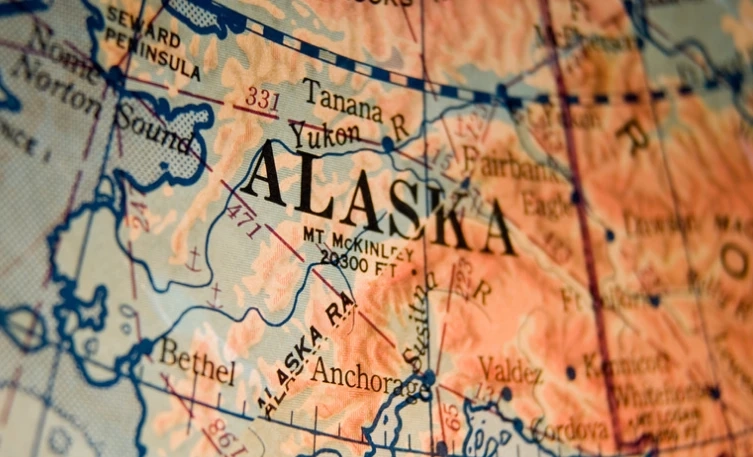Relocating to Alaska is an adventure in itself. With jaw-dropping wilderness, vast landscapes, and a reputation for rugged independence, it’s no wonder many dream of calling the Last Frontier home. But once the decision to move is made, a practical question arises: should you drive your car to Alaska or opt for professional Alaska car transport? The answer depends on many factors, from logistics and time constraints to the sheer nature of the journey.
The Myth and Romance of the Great Drive North
Driving to Alaska is a bucket list item for many road trip enthusiasts. The most common route is via the Alaska Highway, also known as the Alcan, which stretches over 1,390 miles from Dawson Creek, British Columbia, to Delta Junction, Alaska. When accounting for the full journey from the continental United States, that number swells significantly. For example, starting in Seattle, the trip is about 2,260 miles; from Chicago, you’re looking at over 3,600 miles.
That’s a long haul, with scenery to match. Mountains, forests, wildlife crossings, and stunning remote towns are part of the journey. It’s the kind of experience travel bloggers dream of. But while the drive can be beautiful, it’s also demanding. Unpredictable weather, limited access to services, and long stretches without cell service can quickly turn a romanticized road trip into a stressful ordeal.
Understanding the Logistics of the Drive
Let’s get into the numbers. The average person drives between 300 and 500 miles per day on long-distance road trips. Even at a steady pace, a drive from the Midwest to Alaska can take around 8 to 10 days of consistent driving. That’s not including stops for sightseeing, unexpected delays, or weather-related interruptions.
And then there's the terrain. Driving through Canada means dealing with border crossings, varying road conditions, and the possibility of wildlife on the road. In fact, the Alaska Highway is known for frequent moose sightings — a thrill until one crosses your path at 60 mph. Each year, Alaska reports over 800 moose-vehicle collisions, underscoring the real risks of the drive.
Wear and Tear on Your Vehicle
A cross-continental trip isn’t just tough on your body — it’s tough on your car too. Accumulating thousands of miles in a short time means accelerated wear on tires, brakes, and the engine. If you’re driving an older model or a car not built for rugged terrain, you may run into issues before even reaching the Alaskan border.
It’s not uncommon for drivers to carry extra gas, spare tires, and emergency kits for the drive. Some even install protective film or covers on the front of their vehicles to guard against gravel damage. And while it’s good to be prepared, the need for these precautions hints at the demanding nature of the journey.
Alaska Car Transport: The Alternative
This is where Alaska car transport enters the conversation. Professional vehicle shipping companies specialize in transporting cars across long distances, and Alaska is no exception. With a network that spans thousands of miles, nationwide car delivery services can pick up your car in nearly any U.S. city and get it to Alaska safely — and without you needing to lift a finger.
Using Alaska car transport means you avoid the exhaustive drive, border bureaucracy, and potential mechanical issues. Plus, your vehicle doesn’t take on thousands of miles of wear before even arriving in your new hometown.
Nationwide car delivery companies typically handle the complex logistics for you. They manage customs documentation, coordinate with ports (since many shipments include ferry transport into Alaska), and ensure your car arrives within a specified window of time.
Time Is a Factor
Perhaps the most overlooked cost of driving to Alaska is time. For most working adults or families planning a move, taking two weeks off to drive, on top of preparing for a major life change, simply isn’t feasible.
With professional shipping, your car can be en route while you’re flying ahead, setting up your home, or just relaxing after the chaos of packing. This is especially convenient for those with tight moving timelines or remote work responsibilities.
Safety and Stress
While the idea of the open road is appealing, the reality can be stressful. Long driving hours increase the risk of fatigue-related accidents, which account for over 100,000 crashes in the U.S. annually. Navigating remote areas with spotty GPS coverage adds an extra layer of complexity, especially if something goes wrong.
By contrast, car shipping offers a lower-stress option. Your vehicle is loaded and tracked through its journey, and most reputable Alaska car transport services offer insurance coverage for peace of mind. You’ll receive updates on its progress, and many services provide door-to-door delivery or convenient pick-up locations.
When Driving Might Still Be Worth It
Of course, there are situations where driving might make sense. If you’re planning a slow-paced relocation and want to turn it into a month-long vacation, the drive offers memories that last a lifetime. It’s also a chance to bring items that might not fit on a plane or in a shipping container. Adventurers, nature photographers, and road warriors may find the experience personally rewarding, even with the challenges.
Just be sure to consider vehicle readiness, personal stamina, and seasonal timing. Roads that are passable in summer may become treacherous in winter, especially as you near the Yukon and Alaska border.
A Decision That Depends on You
In the end, the decision between driving and shipping your car to Alaska hinges on your priorities. Are you looking for an adventure, or do you value efficiency? Do you have the time, or do you need to focus on other aspects of your move?
Nationwide car delivery companies offer a reliable, convenient solution for most movers, especially when juggling family, work, or tight schedules. Alaska car transport services have come a long way, offering transparent timelines, safety assurances, and stress-free relocation for your vehicle. Meanwhile, for those who crave the road and aren’t daunted by distance or potential setbacks, the highway to Alaska remains an epic American journey.
Whatever you choose, one thing is certain: getting to Alaska is only the beginning of your next great adventure.


